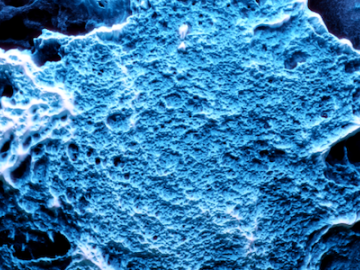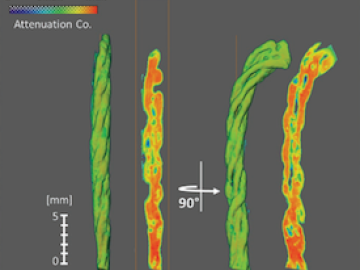
Filter News
Area of Research
- (-) Computer Science (2)
- (-) National Security (23)
- (-) Neutron Science (123)
- (-) Quantum information Science (2)
- Advanced Manufacturing (22)
- Biology and Environment (21)
- Building Technologies (1)
- Computational Biology (1)
- Electricity and Smart Grid (1)
- Energy Science (98)
- Functional Materials for Energy (1)
- Fusion and Fission (7)
- Fusion Energy (2)
- Isotope Development and Production (1)
- Isotopes (27)
- Materials (72)
- Materials for Computing (11)
- Nuclear Science and Technology (18)
- Supercomputing (68)
News Topics
- (-) 3-D Printing/Advanced Manufacturing (8)
- (-) Cybersecurity (21)
- (-) Exascale Computing (2)
- (-) Frontier (2)
- (-) Neutron Science (120)
- (-) Space Exploration (3)
- Advanced Reactors (2)
- Artificial Intelligence (23)
- Big Data (12)
- Bioenergy (11)
- Biology (11)
- Biomedical (16)
- Biotechnology (2)
- Buildings (2)
- Chemical Sciences (5)
- Clean Water (2)
- Composites (1)
- Computer Science (47)
- Coronavirus (12)
- Energy Storage (9)
- Environment (14)
- Fossil Energy (1)
- Fusion (2)
- Grid (8)
- High-Performance Computing (8)
- Hydropower (1)
- Machine Learning (18)
- Materials (16)
- Materials Science (25)
- Mathematics (1)
- Microscopy (5)
- Nanotechnology (12)
- National Security (35)
- Nuclear Energy (7)
- Partnerships (5)
- Physics (11)
- Polymers (1)
- Quantum Computing (1)
- Quantum Science (17)
- Security (12)
- Simulation (1)
- Summit (8)
- Transportation (7)
Media Contacts

Neutron scattering techniques were used as part of a study of a novel nanoreactor material that grows crystalline hydrogen clathrates, or HCs, capable of storing hydrogen.

Laboratory Director Thomas Zacharia presented five Director’s Awards during Saturday night's annual Awards Night event hosted by UT-Battelle, which manages ORNL for the Department of Energy.

Scientists at ORNL used neutron scattering to determine whether a specific material’s atomic structure could host a novel state of matter called a spiral spin liquid.

Though Nell Barber wasn’t sure what her future held after graduating with a bachelor’s degree in psychology, she now uses her interest in human behavior to design systems that leverage machine learning algorithms to identify faces in a crowd.

To solve a long-standing puzzle about how long a neutron can “live” outside an atomic nucleus, physicists entertained a wild but testable theory positing the existence of a right-handed version of our left-handed universe.

How an Alvin M. Weinberg Fellow is increasing security for critical infrastructure components

ORNL researchers used the nation’s fastest supercomputer to map the molecular vibrations of an important but little-studied uranium compound produced during the nuclear fuel cycle for results that could lead to a cleaner, safer world.

A force within the supercomputing community, Jack Dongarra developed software packages that became standard in the industry, allowing high-performance computers to become increasingly more powerful in recent decades.

From helping 750 million viewers watch Princess Diana’s wedding to enabling individual neutron scientists observe subatomic events, Graeme Murdoch has helped engineer some of the world’s grandest sights and most exciting scientific discoveries.

Textile engineering researchers from North Carolina State University used neutrons at Oak Ridge National Laboratory to identify a special wicking mechanism in a type of cotton yarn that allows the fibers to control the flow of liquid across certain strands.


